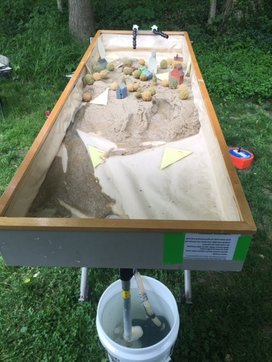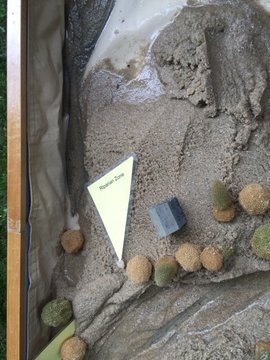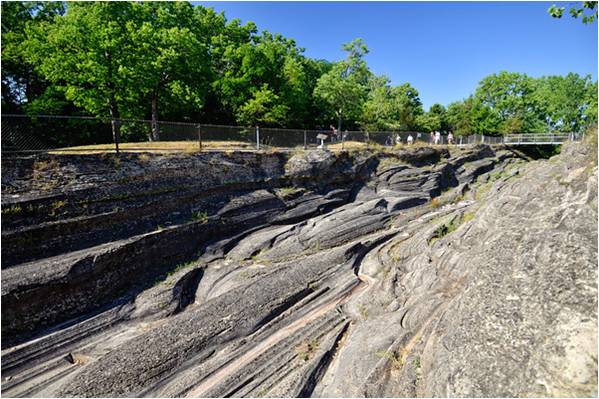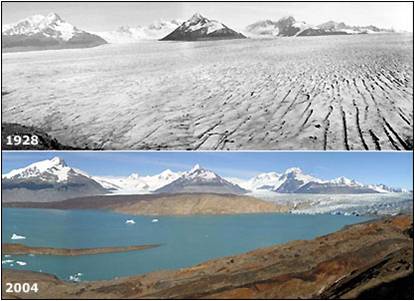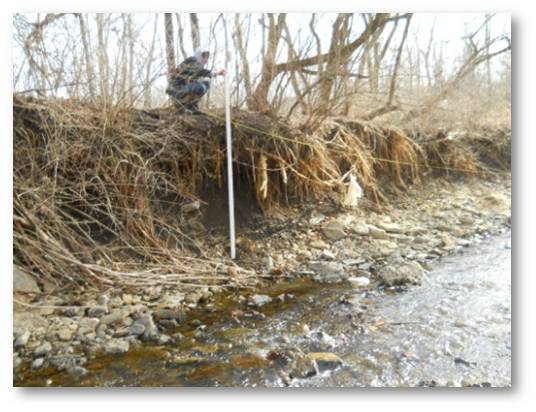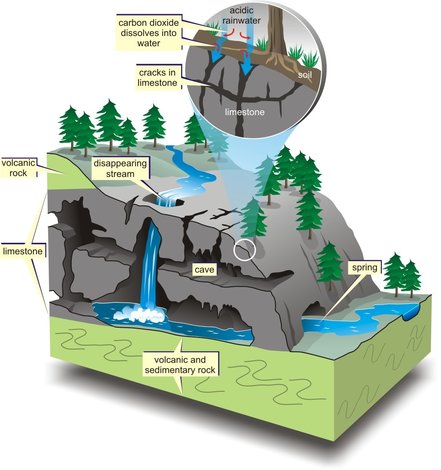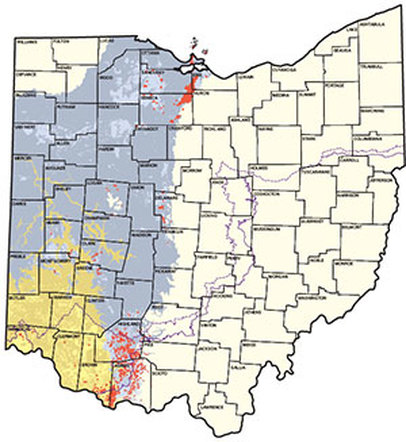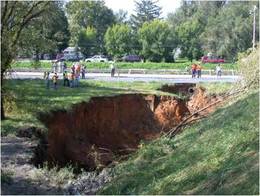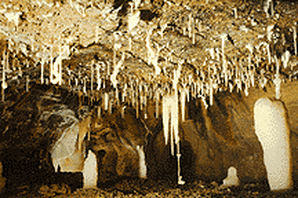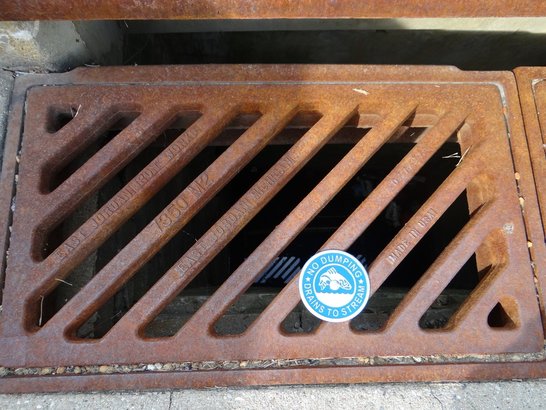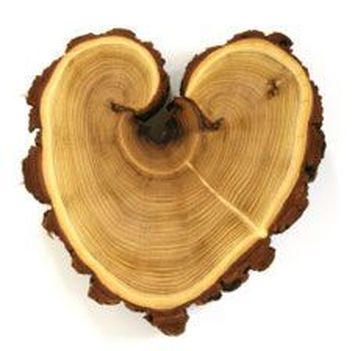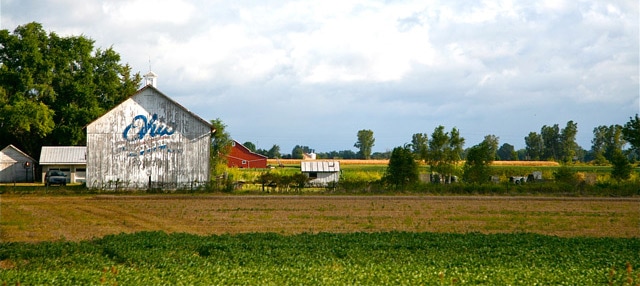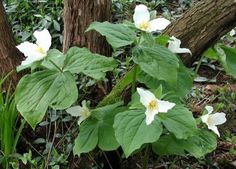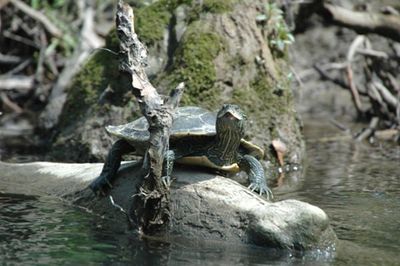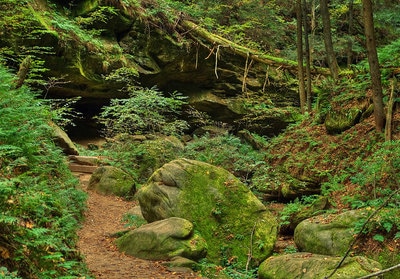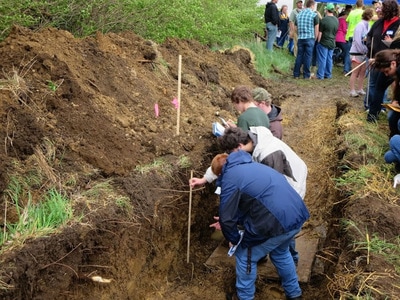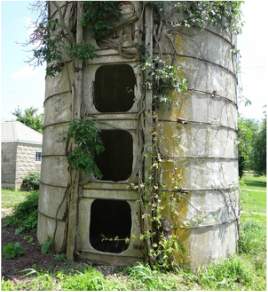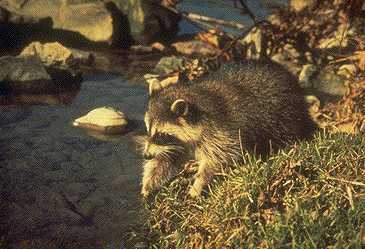|
Working in classrooms across Warren County, we often hear 4th graders reciting rhymes, chants, or songs aimed at committing to memory the three processes that change our Earth's surface; Weathering breaks or changes it, Erosion takes or carries it, and Deposition drops or deposits it. Or in 8th grade classes, we witness students further investigating how combinations of constructive and destructive geological processes form Earth’s surface. Understanding these concepts falls in line with Ohio Learning Science Standards and also helps lay the foundation for students to observe and learn how and why our planet is shifting and changing. Then they can better study how human activity may play a role in the acceleration or deceleration of these changes, for we too are part of this system. One way Warren County SWCD assists in this learning experience is to bring in our interactive stream/geology table to the classroom for students to visually observe destructive erosion and constructive deposition in action. Students have the opportunity to make hypotheses about what they may see, and then participate in creating stream ecosystems and/or various land forms. Multiple scenarios can be developed to see how the addition or removal of elements changes the rate of weathering, erosion, and deposition on the model sand table. By being able to visually watch formation of land forms, soil erode from river cut banks, and deltas form via deposition, students can connect the definition of these processes with real life effects. They also gain correct terminology and vocabulary to better discuss a river ecosystem and prepare them for future ecology studies.
Weathering, erosion, and deposition are constantly occurring in our environment. Agents of change include water, wind, gravity, and ice. Studying earth formations through hands on demonstrations of different types of weathering and erosion, sets up students to delve into both the past and the future. Exploring topics like glacial evidence of mechanical weathering provides insight into how the Ohio landscape started to emerge. http://geology.teacherfriendlyguide.org/index.php/glaciers-mw/glaciers-landscapes-mw https://nsidc.org/cryosphere/glaciers/questions/land.html Kelly's Island, Sandusky, Ohio And how glacial melting from climate change may alter landscapes in the future... Muir's Inlet, Riggs Bay glacier River systems connect to topics of erosion which impacts human development and water quality issues. Sediment pollution in river systems affects ecological balances and drinking water. Streambank erosion in tributaries contribute to overall stream health. Turtle Creek, Lebanon Ohio Chemical weathering and erosion contribute to karst formations like sink holes and caves. These underground wonders can be explored with different activities and demonstrations. Ohio karst areas |
Details
Author:
|
||||||||||||
|
|
Contact:PHONE: (513) 695 - 1337
EMAIL: [email protected] HOURS: Monday - Friday 7:30am - 4:00pm (except holidays) Connect:Warren County Soil & Water Conservation District Copyright © 2016
Warren SWCD Privacy Notice. Emails are serviced by Constant Contact. Constant Contact's Privacy Notice. |
